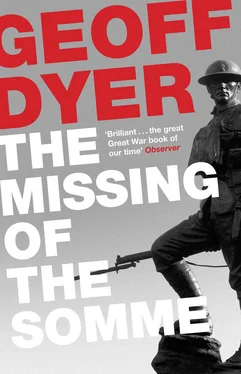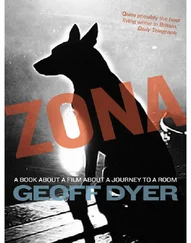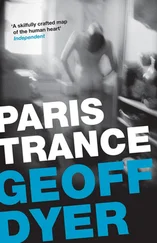Geoff Dyer - The Missing of the Somme
Здесь есть возможность читать онлайн «Geoff Dyer - The Missing of the Somme» весь текст электронной книги совершенно бесплатно (целиком полную версию без сокращений). В некоторых случаях можно слушать аудио, скачать через торрент в формате fb2 и присутствует краткое содержание. Год выпуска: 2012, Издательство: Canongate Books, Жанр: Биографии и Мемуары, Публицистика, Критика, на английском языке. Описание произведения, (предисловие) а так же отзывы посетителей доступны на портале библиотеки ЛибКат.
- Название:The Missing of the Somme
- Автор:
- Издательство:Canongate Books
- Жанр:
- Год:2012
- ISBN:нет данных
- Рейтинг книги:3 / 5. Голосов: 1
-
Избранное:Добавить в избранное
- Отзывы:
-
Ваша оценка:
- 60
- 1
- 2
- 3
- 4
- 5
The Missing of the Somme: краткое содержание, описание и аннотация
Предлагаем к чтению аннотацию, описание, краткое содержание или предисловие (зависит от того, что написал сам автор книги «The Missing of the Somme»). Если вы не нашли необходимую информацию о книге — напишите в комментариях, мы постараемся отыскать её.
The Missing of the Somme — читать онлайн бесплатно полную книгу (весь текст) целиком
Ниже представлен текст книги, разбитый по страницам. Система сохранения места последней прочитанной страницы, позволяет с удобством читать онлайн бесплатно книгу «The Missing of the Somme», без необходимости каждый раз заново искать на чём Вы остановились. Поставьте закладку, и сможете в любой момент перейти на страницу, на которой закончили чтение.
Интервал:
Закладка:
masses of men and materials, moving randomly through a dead ruined world towards no identifiable objective; it is aimless violence and passive suffering, without either a beginning or an end — not a crusade, but a terrible destiny.
Destiny is the wrong word here, for it implies a purpose, a goal, and thereby contradicts his main point that ‘nothing really happens ’. Not a destiny, then, but a condition .
After a couple of hours of this condition I am stupefied by boredom. My interest is revived briefly by a sequence showing an officer in cavalry uniform — cap, boots, riding coat, riding a tank. An innovation so novel that on titles the word is always flanked by inverted commas, the ‘tank’ is the real star of these films. Ugly, slow, it lumbers up to the battlefield and then lumbers back again, unscathed and terrifying, an ungainly iron beetle. A bucking beetle, an iron bronco rather, for as it dips and grinds over the cratered field the officer perched atop tries desperately to keep a stiff upper body.
After this humorous interlude the war reverts to the plodding, plotless norm. The same faces, the same ground. I imagined I could watch footage endlessly and am surprised by my longing for modern documentary framing, for the raw material of history to be recut, edited down further, reshaped and contextualized. I almost find myself wishing there were a few of those interviews with ageing generals (‘Yes, I like to think I did for them both with my plan of attack.’) that I’d hated in The World at War .
The war goes on, silently, visibly. The same faces, the same ground. A title says something about our tireless armies marching without rest and I feel I’m the tireless viewer yomping without pause through the battles of Ancre, the Somme, Arras — I’ve long stopped noticing which is which or taking notes. I sit for another quarter of an hour, slumping deeper and deeper in my chair. Eventually I can bear it no longer. I get up, bang on the projectionist’s door and plead, ‘O Jesus, make it stop!’
He is only too happy to call a truce. He can knock off a bit early for lunch too. Live and let live. As I walk out I half expect to be presented with a white feather by more diligent researchers.
This is what the war is like for us. We can stop it at will. We gaze at photographs of soldiers in the trenches. Snow, dirt, cold, death. When we have been there long enough, we get up and leave, turn the page and move on.
The war was filmed at 16 to 18 frames per second on hand-cranked cameras. Modern projectors — like the one in the museum’s screening room — run at 24 frames per second and so the action flickers quickly by.
As part of an installation in the museum’s main building a special projector has been set up to show an endless loop of parts of The Battle of the Somme at the correct speed. Men marching to the front, survivors limping back. This is the middle segment of that continuous line of men first seen entraining for France and glimpsed later winding its way past the Cenotaph. An endless loop: a river of men, moving towards death. They are dead and they are going to die. Marching to the front, endlessly, so slowly that they never cease marching. In Craiglockhart, Sassoon remembered the war in an almost identical image:
I visualized an endless column of marching soldiers, singing ‘Tipperary’ on their way up from the back areas; I saw them filing silently along the ruined roads, and lugging their bad boots through mud until they came to some shell-hole where trees were stumps and skeletons. .
Because the original cameras were hand-cranked, it is impossible to synchronize the projector exactly. Consequently the action is often slower than it should be. Like a photo taken at a shutter speed so slow it actually moves, the picture ‘ghosts’.
‘The past is never dead,’ wrote William Faulkner. ‘It’s not even past.’
Before going over the top, an officer said that his men ‘seemed more or less in a trance’. Charles Bean, the official Australian historian of the war, noted that after action ‘the men appeared to be walking in a dream and their eyes looked glassy and starey’. Another survivor recalls going through battle ‘like a sleepwalker’. David Jones notes of combat-weary soldiers that ‘they come as sleepwalkers whose bodies go unbidden of the mind, without malevolence, seeking only rest’. 14
In Manning’s The Middle Parts of Fortune , a company of men are about to march to the front to join a major offensive on the Somme. The men looked at each other ‘with strange eyes, while the world became unreal and empty, and they moved in a mystery, where no help was’. When the order to move off is given there comes
a rippling murmur of movement, and the slurred rhythm of their trampling feet, seeming to beat out the seconds of time, while the liquid mud sucked and sucked at their boots, and they dropped into that swinging stride without speaking. . and the mist wavered and trembled about them in little eddies, and earth, and life, and time, were as if they had never been.
In one of the best passages in his memoirs, Sassoon watched an exhausted Division returning from an offensive on the Somme:
Now there came an interval of silence in which I heard a horse neigh, shrill and scared and lonely. Then the procession of returning troops began. The campfires were burning low when the grinding, jolting column lumbered back. The field guns came first, with nodding men sitting stiffly on weary horses, followed by wagons and limbers and field-kitchens. After this rumble of wheels came the infantry, shambling, limping, straggling and out of step. If anyone spoke it was only a muttered word, and the mounted officers rode as if asleep. The men had carried their emergency water in petrol-cans, against which bayonets made a hollow clink; except for the shuffling of feet, this was the only sound. Thus, with an almost spectral appearance, the lurching brown figures flitted past with slung rifles and heads bent forward under basin-helmets.
Sassoon was ‘overawed’ by what he had witnessed; it seemed as though he ‘had watched an army of ghosts’. In that characteristic wartime attitude of projected retrospect Sassoon felt he ‘had seen the war as it might be envisioned by some epic poet a hundred years hence’. Almost ninety years later this film is the epic, endless poem of the war.
Bearing a wounded comrade over his shoulder, a soldier floats towards the camera. Silent, ghostlike, slow.
Watching the sleep-walking figures we enter dream time, dead time: the remembered dreams of the dead.
A river of men, flowing towards death. Marching to the front, endlessly. Survivors limping back, lessly.
One thing emerges plainly from all this footage: war, for the ordinary soldier, was a continuation of labouring by other means. The battlefield was a vast open-air factory where hours were long, unions not permitted and safety standards routinely flouted. It thereby combined the worst aspects of agricultural labour and industrial shiftwork. The ‘mysterious army of horsemen, ploughmen and field workers who’, in Ronald Blythe’s words, ‘fled the wretchedness of the land in 1914’ discovered, in Flanders, an intensification of wretchedness. Miners found themselves engaged in exactly the same activity they had pursued in peacetime — except here their aim in burrowing beneath the earth was to lay hundreds of pounds of high explosive beneath the enemy’s feet. The Germans, meanwhile, were engaged in similar operations and sometimes the two tunnel systems broke through to each other. Hundreds of feet beneath the earth ‘men clawed at each other’s throats in these tunnels and beat each other to death with picks and shovels’.
For those above ground the chief activity recorded on film is carrying. Before the battle, shells; after, stretchers. Life, one realizes, is primarily a question of loading and unloading, fetching and carrying. Many of the shells are too heavy to be lifted and have to be winched or rolled into position. Every piece of equipment looks like it weighs a ton. There were no lightweight nylon rucksacks or Gore-tex boots. Things were made of iron and wood, even cloth looks like it has been woven from iron filings. Everything weighed more then. Weighed down with equipment, men do not march to the front so much as carry themselves there. Greatcoats are not worn but lugged:
Читать дальшеИнтервал:
Закладка:
Похожие книги на «The Missing of the Somme»
Представляем Вашему вниманию похожие книги на «The Missing of the Somme» списком для выбора. Мы отобрали схожую по названию и смыслу литературу в надежде предоставить читателям больше вариантов отыскать новые, интересные, ещё непрочитанные произведения.
Обсуждение, отзывы о книге «The Missing of the Somme» и просто собственные мнения читателей. Оставьте ваши комментарии, напишите, что Вы думаете о произведении, его смысле или главных героях. Укажите что конкретно понравилось, а что нет, и почему Вы так считаете.












